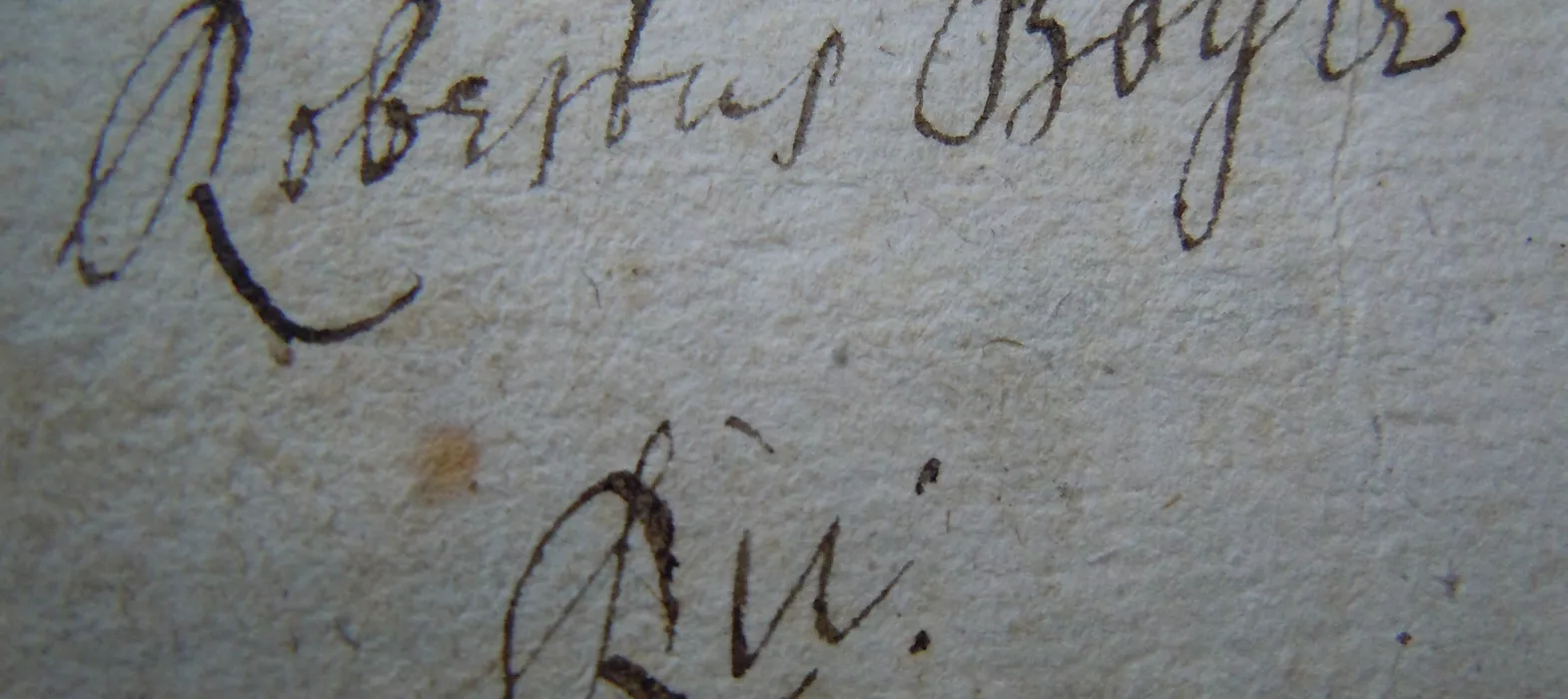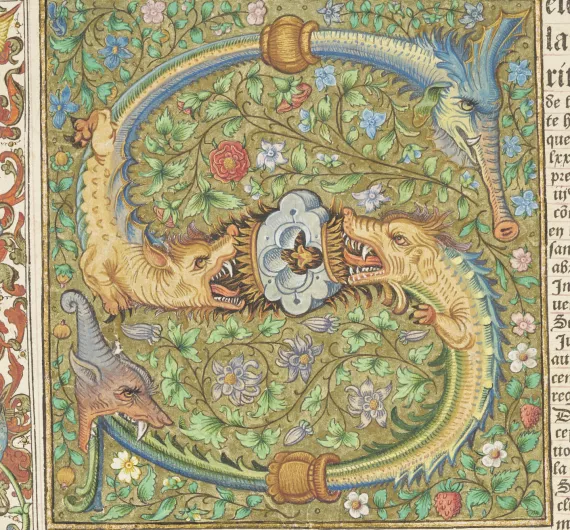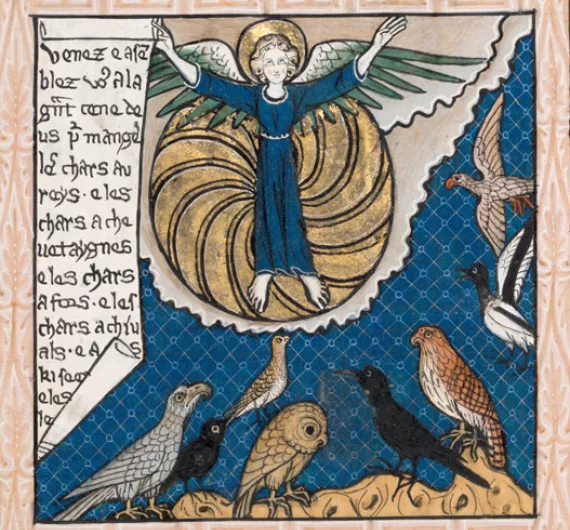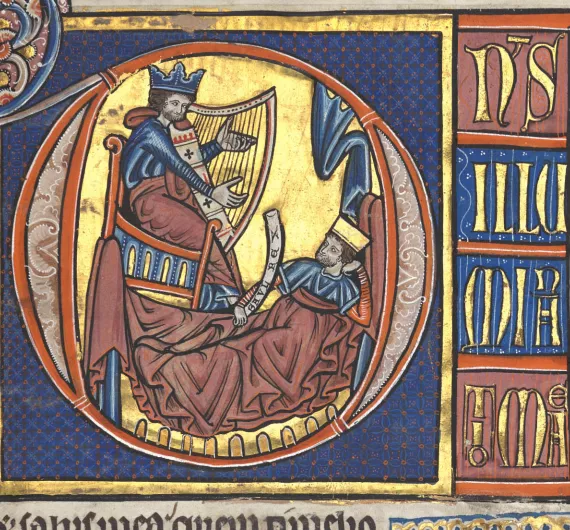A library was established at New College’s foundation in 1379.
- Rare Books
- Early Printed Books Catalogues and Finding Aids
- Manuscripts
- Manuscripts Catalogues, Finding Aids, and Glossary
- Some Acquisitions Highlights—annually from 2019 onwards
- Access
Rare Books
Today New College Library holds c. 30,000 pre-1850 volumes, including 385 incunabula (fifteenth-century European imprints) and c. 5,000 ESTC books (largely British Isles imprints up to 1800). The Library’s printed books purchased or given since the early days of printing have survived in large numbers, particularly in law, theology, classics, early medicine, and science.
Explore our Rare Books Gallery to view some of the visual highlights of our rare book collections, and watch our video series ‘Curators’ Choice’. An account of New College’s history since the College’s foundation in 1379 is also available.
Notable among the Library’s extensive early printed book collections are:
- 25 printed books bequeathed by Cardinal Reginald Pole (1500–1558), the last Roman Catholic Archbishop of Canterbury, which had belonged to the Belgian humanist, Christopher Longolius (1488–1522);
- 30 volumes bequeathed by Thomas Martin (1520/1–1592/3), including French translations of Thucydides, Livy, and Aristotle;
- Medical and scientific books, among others, bequeathed by Walter Bailey (c. 1529–1592), Regius Professor of Medicine;
- c. 400 medical books given in 1617 by Thomas Hopper (d. 1624);
- c. 500 volumes, mainly contemporary theology, given in 1617 by Arthur Lake (1569–1626), Bishop of Bath and Wells, and Warden of New College, 1613–1616;
- A general scholarly library of c. 170 items bequeathed by Robert Pinke (1573–1647), Warden of New College, 1617–1647;
- A general collection of c. 600 volumes bequeathed in 1675 by Michael Woodward (1602–1675), Warden of New College, 1658–1675;
- c. fifty books on numismatics, mostly bequeathed by Philip Barton (1694 or 1695–1765), Canon of Christ Church, Oxford, 1733–1765;
- c. 140 seventeenth-century imprints of the scientist, Robert Boyle (1627–1691), some given in 1776 by Martin Wall (1747–1824), Litchfield Professor of Clinical Medicine;
- The bequest of Edward Charles Wickham (1834–1910), Dean of Lincoln Cathedral, strong in classical literature;
- The Keynes Collection, a donation of books largely relating to biblical scholar and grammarian Robert Lowth, Bishop of London (1710–1787), given in 2020 by conservationist and author Randal Keynes (1948–2023).
Early Printed Books Catalogues and Finding Aids
All of our early imprints have been catalogued and can be searched via our catalogue, SOLO. Catalogue entries for our antiquarian material have copy-specific notes (i.e. information about provenance, binding, imperfections, and other details), and these are continually updated as more information comes to light.
Relevant early printed holdings of New College Library within the scope of the English Short Title Catalogue (ESTC) can also be found via this union catalogue (items published between 1473 and 1800, mostly in English and mainly published within the British Isles and North America).
New College Library’s exceptionally fine collection of incunabula is included within the Incunabula Short Title Catalogue (ISTC). Almost all New College Library’s incunables are also helpfully listed in: Dennis E. Rhodes, A Catalogue of Incunabula in all the Libraries of Oxford University outside the Bodleian (Oxford: Clarendon Press, 1982). Many of the Library’s incunables are included within the Gesamtkatalog der Wiegendrucke, which provides greater detail about copies than the ISTC but is currently less comprehensive in its coverage. Work is also in progress to create entries for the Library’s incunables in the Material Evidence in Incunabula (MEI) database, a project which enables tracking of the movement of books across Europe and through the centuries.
Manuscripts
The Library is fortunate to hold more than 380 manuscripts, mostly medieval and post-medieval ones. Indeed, New College Library, of all Oxford’s medieval colleges, has the largest collection of manuscript books remaining in situ—more manuscripts survive from the medieval library of New College than from that of any other Oxford or Cambridge college. The College’s founder, William of Wykeham, Bishop of Winchester gave nearly 250 manuscript books, covering theology, philosophy, canon law, and civil law, of which about thirty survive. Most of the Library’s manuscripts are in Latin or Greek but the wide range of languages covered by our manuscript holdings also includes: Arabic, Armenian, Burmese, Dutch, English, French, Hebrew, and Syriac. Explore our Manuscripts Gallery to view some of our remarkable manuscript treasures, and watch our video series ‘Curators’ Choice’.
New College Library’s manuscript holdings include:
- Twelfth- and thirteen-century, illuminated Biblical and prophetic texts in Greek;
- The celebrated, early thirteenth-century de Brailes Psalter, known as the “New College Psalter”—the most elaborate surviving example of the work of manuscript artist, William de Brailes (fl. 1230–60), as well as another thirteenth-century illuminated Psalter, written for St Albans Abbey;
- An early fourteenth-century, illuminated Anglo-Norman prose translation of the Apocalypse of St John, of sumptuous artistry—the “New College Apocalypse”, also known as the “Bohun Apocalypse”;
- A fifteenth-century illuminated manuscript of Confessio Amantis, the great Middle English poem by John Gower (c. 1330–1408), and another fifteenth-century illuminated manuscript of perhaps the greatest Middle English literary text, The Canterbury Tales by Gower’s friend, Geoffrey Chaucer (c. 1343–1400), containing textually significant scribal insertions;
- Exquisitely illuminated, fifteenth- and sixteenth-century Dutch, Flemish, and French Books of Hours;
- A sixteenth-century illustrated manuscript of the Qu’ran;
- An annal for 1515 by the Poet Laureate, Bernard André (1450–1522), presented as a New Year’s gift to King Henry VIII;
- An incomplete Latin translation by King Henry VIII’s librarian, Wouter Deleen (c. 1500–1563) of Hermann von Wied’s Einfältiges Bedenken (1543), bound together with a copy of the same German printed book in a volume intended for the King’s library and bearing the King’s coat of arms;
- Tudor wardrobe warrants, issued principally by King Edward VI and Queen Mary I between 1550 and 1558, including extraordinary rarities: two signed by Lady Jane Grey, as Queen Jane;
- The Sir Isaac Newton (1643–1727) papers, four volumes of largely theological and historical manuscripts, which came to the Library in 1872.
Manuscripts Catalogues, Finding Aids, and Glossary
It should be noted that manuscripts cannot be listed on SOLO. Most of New College Library’s medieval manuscripts, however, are listed in: H. O. Coxe, Catalogus codicum MSS. qui in collegiis aulisque Oxoniensibus hodie adservantur (Oxford: Oxford University Press, 1852). This catalogue is out-dated and incomplete, but an online version of Coxe’s Catalogus codicum MSS. Collegii Novi does provide a helpful, if brief and partial, searchable guide to most of the Library’s manuscript holdings.
Illuminated manuscripts held in New College Library are also described briefly, with some information about illuminators, scribes, and provenance, in: J. J. G. Alexander and Elźbieta Temple, Illuminated Manuscripts in Oxford College Libraries, the University Archives and the Taylor Institution (Oxford: Clarendon Press, 1985).
- MS 44 is a Greek prophet book likely produced in Constantinople (or Cyprus), possibly around 1220–1240, and its illumination is given extensive treatment in: John Lowden, Illuminated Prophet Books: A Study of Byzantine Manuscripts of the Major and Minor Prophets (London: Pennsylvania State University Press, 1988), pp. 26–32. This luxurious manuscript came to New College from the library of Cardinal Reginald Pole, the last Roman Catholic Archbishop of Canterbury. It is famous for its portraits of the Prophets, with a depiction of each one beside the relevant portion of text.
- MS 322, “The New College Psalter”, c. 1240–1250 is described at length in: Nigel Morgan, Early Gothic Manuscripts: I, 1190–1250 (London: Harvey Miller, 1982), pp. 121–123. This beautifully decorated manuscript is renowned as the largest and most elaborate extant work from the de Brailles workshop.
- MS 358 is an illuminated Psalter written c. 1260–1280 for the Benedictine Abbey of St Albans and given to the Library post-Coxe by Anne Wetherell, widow of New College Fellow, Richard Wetherell. It is described in both: N.R. Ker, Medieval Manuscripts in British Libraries: III. Lampeter-Oxford (Oxford: Clarendon Press, 1983), pp. 667–668 and in: Nigel Morgan, Early Gothic Manuscripts: II, 1250–1285 (London: Harvey Miller, 1988), pp. 177–178. It is especially notable for its elaborate ornamental Beatus page.
- MS 65, “The New College Apocalypse”, 1300–1310 is described in: Lucy Freeman Sandler, Gothic Manuscripts 1285–1385: II Catalogue (London: Harvey Miller, 1986), p. 18, which most probably mis-dates this manuscript to around a couple of decades before it was actually produced based on a likely mis-attribution of ownership to a ‘Joan de Bohun’ who is a little earlier than the ‘Joan de Bohun’, maternal grandmother to King Henry V, who was in fact most likely its owner. It is a manuscript of astonishing beauty, containing sixty-six illuminations of superb artistry and freshness with frequent use of gold leaf.
- MS 266, John Gower’s Confessio Amantis, c. 1400–1425 is described at length in: Derek Pearsall and Linne Mooney, A Descriptive Catalogue of the English Manuscripts of John Gower’s Confessio Amantis (Cambridge: D. S. Brewer, 2021), pp. 238–244. Gower’s great Middle English poem, the Confessio Amantis, survives worldwide in 49 manuscripts, only two of which—one belonging to New College Library and another to the Morgan Library and Museum, New York—contain (or once contained) full cycles of illustrations.
- New College Library also holds a second, slightly later and somewhat less celebrated manuscript of Gower’s Confessio Amantis, our MS 326; this one dates from c. 1450–1475, and is also described at length in Pearsall and Mooney (2021), pp. 245–250.
- MS 288, “The Chaundler Manuscript”, 1462–1464 is described at length in: Kathleen L. Scott, Later Gothic Manuscripts 1390–1490: II Catalogue and Indexes (London: Harvey Miller, 1996), pp. 310–313. It is celebrated in particular for its stunning four full-page, coloured and tinted drawings of New College, Winchester College, and Wells.
A comprehensive new catalogue of our manuscripts is currently being compiled, and sample entries are available to be viewed.
An excellent online glossary of terms relating to illuminated manuscripts is available from the British Library.
Some Acquisitions Highlights—annually from 2019 onwards
- 2024:
- 2023:
- 2022:
- 2021:
- 2020:
- 2019:
Access
All enquiries about accessing the Library’s manuscripts and its early printed books should be made to the Librarian:
Dr Christopher Skelton-Foord
Librarian
New College
University of Oxford
Holywell Street
Oxford OX1 3BN
UK
As none of this material is stored in the main library, unfortunately “same-day” service is not possible. Access to these volumes will be by appointment only; provision is limited, so please contact him as far in advance as possible.

Discover more about New College




